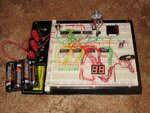lee321987
Member level 5

I found some cool looking 26-segment (28 if the "dot" LEDs work) LED displays (13 pins per digit) at a local surplus warehouse.
I've searched online for a datasheet, but I can't find anything.
There are only 14 pins coming out of each display, and it looks like there is an IC in it, because there is a glob of black (epoxy?) in the middle of the underside of the device, so I'm assuming it's gonna take something special to get a number displayed on it.
Any idea on some experiments I could do to figure out how this thing works?
If it helps, I have a PIC micro controller programer, a basic knowledge of C programming, and two PIC's (PIC12F675, and PIC16F886).
The info printed on the part is:
======================
LTM8494P
543
TAIWAN
======================
(attached are pics of the part)
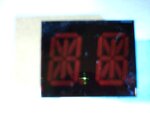
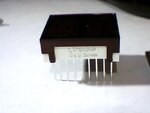
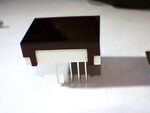
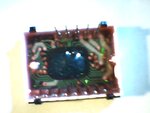
I've searched online for a datasheet, but I can't find anything.
There are only 14 pins coming out of each display, and it looks like there is an IC in it, because there is a glob of black (epoxy?) in the middle of the underside of the device, so I'm assuming it's gonna take something special to get a number displayed on it.
Any idea on some experiments I could do to figure out how this thing works?
If it helps, I have a PIC micro controller programer, a basic knowledge of C programming, and two PIC's (PIC12F675, and PIC16F886).
The info printed on the part is:
======================
LTM8494P
543
TAIWAN
======================
(attached are pics of the part)









